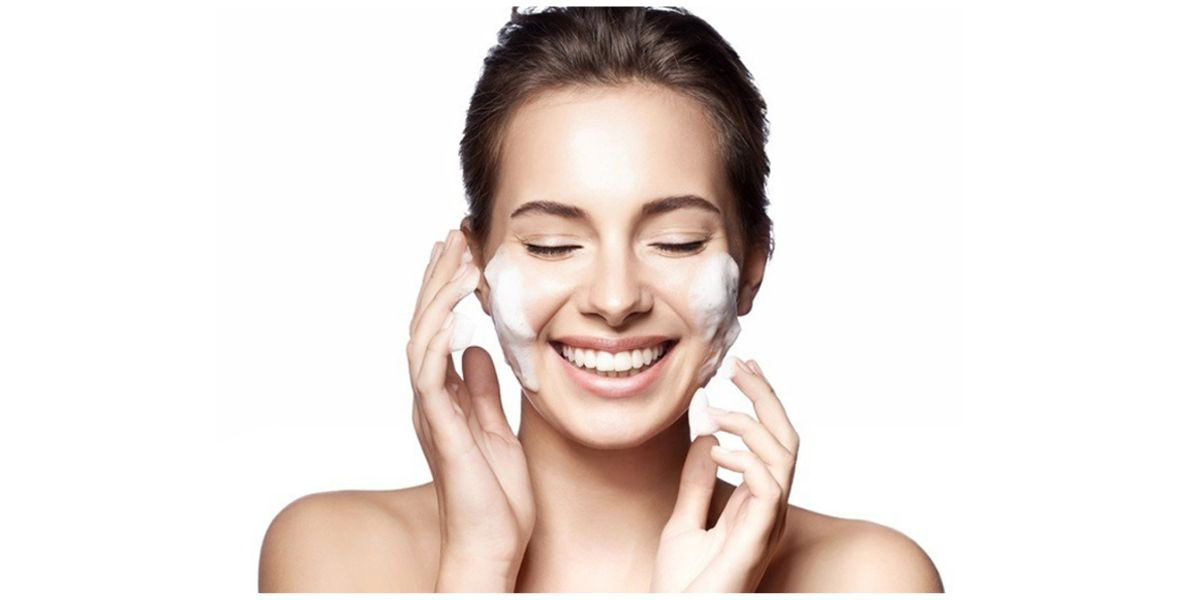Understanding Hyperpigmentation: Can Whitening Brightening Creams Help?
Hyperpigmentation is one of the most common skin concerns worldwide, impacting individuals of all skin types and ages. This condition appears as darkened patches or spots on the skin due to the overproduction of melanin, the pigment responsible for skin color. Although hyperpigmentation is generally harmless, many people seek treatment for aesthetic reasons, with a common option being whitening brightening cream.
In this article, we’ll explore what causes hyperpigmentation, the types, how whitening brightening creams work, and whether they can be effective in reducing dark spots.
What is Hyperpigmentation?
Hyperpigmentation refers to any condition that leads to patches of skin becoming darker than the surrounding area. This occurs when excess melanin, the natural pigment that gives skin, hair, and eyes their color, is produced in certain areas. It can be triggered by a range of factors, including sun exposure, hormonal changes, inflammation, and even certain medications. While hyperpigmentation is generally not harmful, it can be distressing for those affected and often leads to a search for solutions, including whitening brightening creams.
Types of Hyperpigmentation
Melasma
Often called the "mask of pregnancy," melasma is a type of hyperpigmentation that typically appears as brown or grayish patches on the face. While it’s especially common in women, men can also experience melasma. Hormonal changes, particularly during pregnancy, are common triggers, as well as exposure to sunlight.Post-Inflammatory Hyperpigmentation (PIH)
This type of hyperpigmentation occurs after skin inflammation or injury. Common causes include acne, eczema, or any trauma to the skin. PIH can affect all skin types but is more prevalent among individuals with darker skin tones. PIH appears as flat spots of discoloration and can take months to fade without treatment.Sunspots (Solar Lentigines)
Often called age spots or liver spots, sunspots are darkened areas that result from prolonged sun exposure. Sunspots are most common in areas frequently exposed to the sun, such as the face, shoulders, hands, and arms. They are typically harmless but can become darker with more sun exposure.Freckles
Freckles are small, flat, brown spots that are usually genetic and become darker with sun exposure. Although not considered a severe form of hyperpigmentation, many individuals seek treatment to reduce their appearance.
Common Causes of Hyperpigmentation
Hyperpigmentation can stem from various internal and external factors. Understanding these can help in identifying the right treatment.
Sun Exposure
UV rays from the sun are a leading cause of hyperpigmentation. When skin is exposed to sunlight, melanin production increases as a defense mechanism. This is why applying sunscreen daily is one of the best ways to prevent hyperpigmentation.Hormonal Changes
Conditions like melasma are often linked to hormonal fluctuations, commonly due to pregnancy, birth control pills, or hormone therapy. Hormonal changes can trigger excess melanin production, particularly in people predisposed to pigmentation issues.Skin Trauma
Inflammation caused by skin injuries, acne, or even procedures like chemical peels can result in post-inflammatory hyperpigmentation (PIH). This is particularly common among individuals with darker skin tones.Certain Medications
Some medications, including certain antibiotics and chemotherapy drugs, can cause hyperpigmentation as a side effect. This happens because they stimulate melanin production or cause photosensitivity.Aging
As we age, the skin’s ability to regenerate reduces, leading to an accumulation of pigment. Age spots or sunspots are a typical result of aging.
How Whitening Brightening Creams Work
Whitening and brightening creams have become popular solutions for those looking to manage hyperpigmentation and achieve a more even skin tone. These creams typically work by reducing melanin production or by exfoliating the skin to remove the pigmented surface cells. Here’s a closer look at how these creams work:
Melanin Inhibition
Whitening brightening creams often contain active ingredients that inhibit tyrosinase, an enzyme essential in melanin production. By slowing down melanin synthesis, these creams can help prevent further darkening of the skin. Common ingredients that act as tyrosinase inhibitors include hydroquinone, kojic acid, arbutin, and certain peptides.Exfoliation and Skin Renewal
Some whitening brightening cream include exfoliating agents, like glycolic acid or lactic acid, which help to remove the uppermost layer of the skin. This action encourages cell turnover, allowing newer, lighter skin cells to surface, which can gradually reduce the appearance of dark spots.Antioxidants
Antioxidants like vitamin C, niacinamide, and resveratrol are often included in whitening brightening creams. They help neutralize free radicals that cause skin damage, which can exacerbate hyperpigmentation. Vitamin C, in particular, is a popular ingredient due to its brightening properties.Moisturization and Barrier Repair
Some whitening brightening creams also contain ingredients that strengthen the skin’s barrier, keeping it hydrated and preventing further damage. A well-moisturized skin barrier is essential for any treatment, as damaged or dry skin can worsen pigmentation issues.
Popular Ingredients in Whitening Brightening Creams
Whitening brightening creams have specific ingredients formulated to target hyperpigmentation. Here are some popular ones:
Vitamin C
Known for its brightening effects, vitamin C is an antioxidant that helps reduce dark spots and improve overall skin tone. It also helps boost collagen production, giving the skin a plumper appearance.Niacinamide
Niacinamide, or vitamin B3, is known for its anti-inflammatory properties and ability to improve skin texture. It is also effective in reducing the appearance of hyperpigmentation by inhibiting melanin transfer.Kojic Acid
Derived from certain types of fungi, kojic acid is a natural ingredient used in many whitening brightening creams. It acts as a tyrosinase inhibitor, reducing melanin production in the skin.Hydroquinone
Hydroquinone is a powerful skin-lightening agent and is often used in prescription-based whitening brightening creams. However, it should be used with caution due to potential side effects and is often recommended under a dermatologist’s supervision.Arbutin
Found in bearberry plants, arbutin is a milder alternative to hydroquinone that helps fade dark spots. It’s considered safe for most skin types.Retinoids
Retinoids, derived from vitamin A, are known to improve cell turnover, which helps reduce the appearance of dark spots. They’re effective but can cause irritation, so they’re best introduced slowly into a skincare routine.
Do Whitening Brightening Creams Actually Work for Hyperpigmentation?
Whitening brightening creams can be effective for mild to moderate cases of hyperpigmentation, particularly those resulting from sun exposure, age spots, and PIH. However, the degree of effectiveness can vary based on the type and depth of pigmentation, skin type, and the specific ingredients in the cream.
For Surface-Level Pigmentation: Whitening brightening creams with exfoliants like glycolic acid or lactic acid may help remove surface pigmentation by promoting cell turnover.
For Deeper Pigmentation: In cases like melasma or deeper hyperpigmentation, topical treatments may not be sufficient on their own. These cases often require more intensive treatments such as chemical peels, laser therapy, or prescription medications. Consulting a dermatologist for more persistent pigmentation issues can provide a comprehensive treatment plan.
Limitations of Whitening Brightening Creams
While these creams offer a viable solution for some, there are limitations to their effectiveness:
Duration of Use
Whitening brightening creams are not an instant solution. They require consistent use over weeks or even months to show visible results.Sensitivity and Irritation
Some of the active ingredients, such as retinoids and hydroquinone, can cause irritation, redness, and dryness. Those with sensitive skin may need to approach these ingredients with caution and seek alternatives.Sun Sensitivity
Some whitening brightening ingredients can make the skin more sensitive to the sun. Regular use of sunscreen is essential to prevent further darkening and protect the skin.Temporary Results
Without consistent use and adequate sun protection, pigmentation may reappear, especially in cases of melasma and sun-induced spots. This is why a holistic approach, including sun protection and lifestyle changes, is crucial.
Tips for Using Whitening Brightening Creams Safely and Effectively
Patch Test
Before applying a new whitening brightening cream all over your face, perform a patch test to check for adverse reactions.Follow Instructions
Some ingredients, like retinoids, are recommended for nighttime use only. Follow the product's instructions for best results and to minimize irritation.Layer with Moisturizers
If the cream causes dryness, layer it with a gentle moisturizer to keep the skin hydrated.Sunscreen is Essential
Always pair whitening brightening creams with daily sunscreen. This helps prevent further pigmentation and protects the skin from UV damage.
Conclusion
Whitening brightening creams can be a helpful solution for treating mild to moderate hyperpigmentation, especially when chosen and used correctly. However, for deeper pigmentation or more stubborn cases, these creams may need to be combined with other treatments under the guidance of a dermatologist. Consistency, patience, and a holistic approach that includes sun protection are essential in achieving and maintaining a clearer, even-toned complexion.
If You Want to More Information About Then, You Can Check Out- Devriz Healthcare









